People are sharing their car photos online more frequently as a result of the internet and social media’s growth. We bet you do too! That’s how automotive photo editing has become a part of the photo industry for a long time.
With this scenario on, it’s crucial to understand how to edit your car photography to make it look its best, regardless of whether you’re a professional photographer or just someone who enjoys taking pictures of their car.
Today, we will cover the fundamentals of this fascinating area of picture editing in this article, along with hints and techniques for taking photos of your car that look professional. By the end of this article, you will develop a strong sense of automotive picture editing and how you can improve yourself.
Importance of Automotive Photo Editing
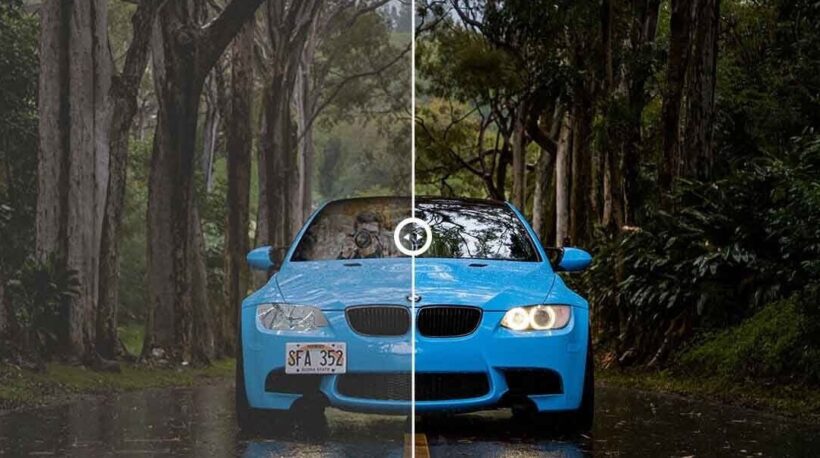
Automotive photo editing is crucial to producing high-quality, professional-looking car pictures. Several factors can affect the final result when taking pictures of a car, such as lighting, color balance, and lens distortion.
Automotive photo editing can provide numerous benefits, some of which include:
Enhancing the vehicle’s appearance: Automotive photo editing can be used to enhance the look of a vehicle by correcting color, contrast, and exposure. This can make the car look more attractive and appealing to potential buyers.
Removing imperfections: Photo editing can remove any imperfections such as scratches, dents, or other damage, which can make a car look better in pictures and videos.
Changing backgrounds: Photo editing can also be used to change the background of a picture or video to better suit the vehicle. This can be especially useful if the original background is distracting or unattractive.
Creating a consistent look: Automotive photo editing can be used to create a consistent look across all pictures and videos, which can help to build brand recognition and identity.
Saving time and money: By editing pictures and videos, car dealerships and businesses can avoid the need to physically stage and photograph each individual car. This can save both time and money in the long run.
Offering customization options: Photo editing can also be used to offer customization options to potential customers, such as different color options, wheel options, or other features.
This process helps to correct these issues and enhance the final image. With the proper editing techniques, you can turn an average car photo into a stunning piece of art that showcases your car’s best features.
Objectives
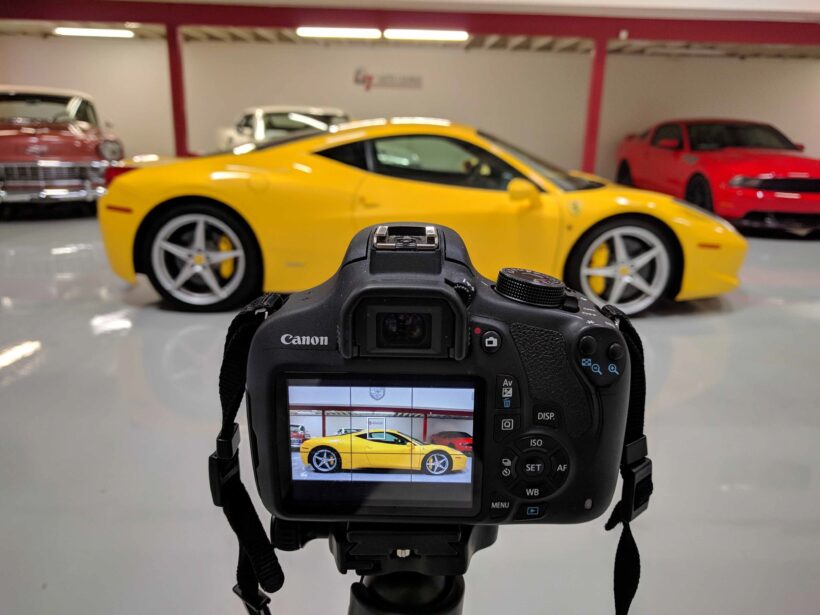
The main objective of professional car picture editing is to present the car in the best light possible. This means removing any distractions or blemishes, adjusting lighting and shadows, and enhancing the overall look and feel of the photo. There are some web tools for editing car pictures such as ClippingCreationsIndia, they have a comprehensive range of car photo editing and car image editing service to give you perfect images to display online and attract potential buyers.
There are several vital elements to consider when editing car pictures, including color correction, background removal, and touch-up work.
Color correction is a crucial step in automotive photo editing. The color of the car should be accurate and consistent in all pictures. A photo editor can adjust the image’s brightness, contrast, and saturation to make the car look vibrant and eye-catching.
Background removal is another essential aspect of car photo editing. The picture’s background should be clean and uncluttered, with no distracting elements. This allows the car to be the main focus of the photo, drawing the viewer’s attention to its design and features.
Touch-up work is the final step in the editing process. A photo editor can remove any blemishes or scratches on the car’s surface, ensuring it looks its best in the final image. This may involve using tools like clone stamps, healing brushes, and spot healing to clean up the photo.
In conclusion, automotive photo editing is critical to marketing and promoting cars. Professional car picture editing can help to make a car look its best, drawing the attention of potential buyers and creating a positive image for the brand.
Whether you’re a car dealership, automobile company, or individual car owner, investing in high-quality car photos is smart. By following these tips and working with a skilled photo editor, you can ensure that your car pictures are eye-catching and professional.
Professional Car Photo Editing Techniques
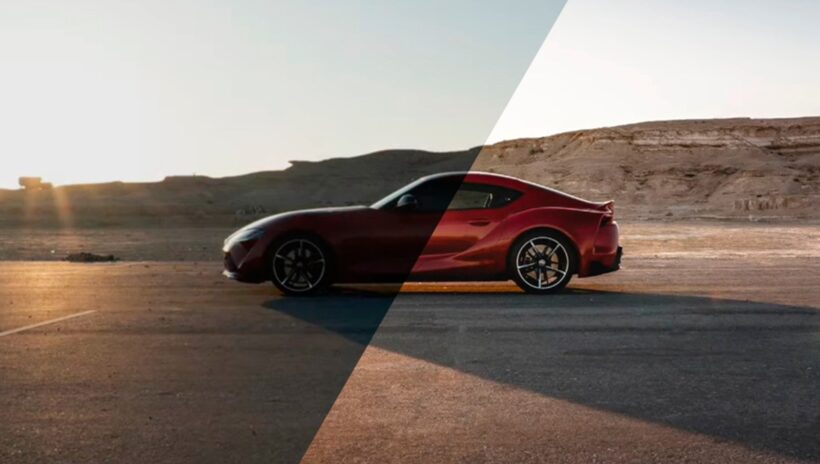
Adjust Lighting and Color Balance: One of the first things you should do when editing a car photo is to adjust the lighting and color balance.
Door lighting can make the car look dull or washed out, while the incorrect color balance can make the colors appear unnatural. You can adjust the lighting and color balance using photo editing software, such as Adobe Photoshop or Lightroom. Take a look at these techniques so that you can give your car photographs a professional touch within a short time.
Remove Distortions: Another common issue with car photography is lens distortion, which can cause the car to appear misshapen or elongated. You can remove these distortions using editing software like Lightroom’s “Lens Correction” tool.
Enhance the Details: Once you’ve corrected the lighting and color balance, you can enhance the car’s details. This includes adjusting the brightness and contrast, sharpening the image, and adding saturation to make the colors pop. You can also use selective editing tools, such as the “Dodge and Burn” tool in Photoshop, to highlight specific details in the car.
Add a Background: Finally, you can add a background to your car photo to enhance its overall look. This could be a plain, solid color or an image of a beautiful landscape or cityscape. You can add text or other graphic elements to the image to make it eye-catching.
Tips for Taking Better Car Photos
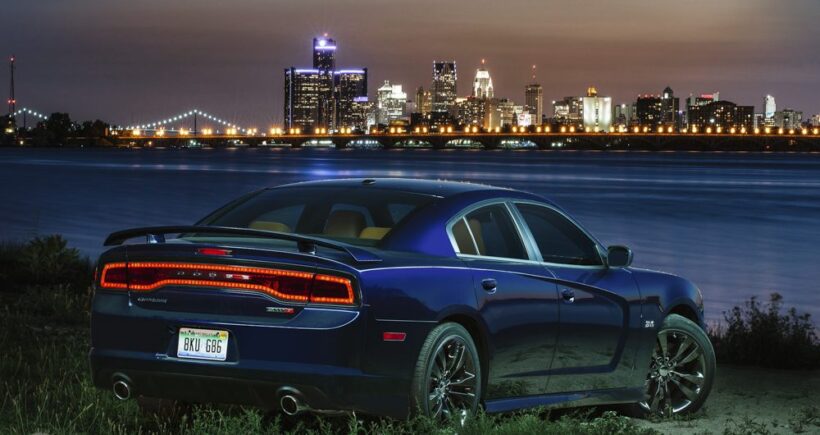
Use Good Lighting: Good lighting is critical to taking great car photos. Try to take your pictures early or late afternoon when the light is soft and warm. Avoid taking photos in direct sunlight, as this can create harsh shadows and make the car look washed out.
Get Close: When taking a photo of a car, try to get as close as possible to the subject. This will allow you to capture all the details and make the car look more prominent in the image.
Never hesitate to move your legs. To become a professional photo, it is wise to crop your photos before post-processing.
Experiment with Angles: Be bold and take car photos with different angles. Try shooting from above, side, or low angle to see what works best for your subject. You never know which perspective can bring out the best of a photo and offer you some extraordinary shots!
Use a Tripod: If you’re taking pictures in low light, consider using a tripod to keep your camera steady. This will help you capture sharp, clear images, even in challenging lighting conditions. And if you are planning to have a long exposure shot during the night or any time of the day, tripods are essential to get your job done!
Final Words
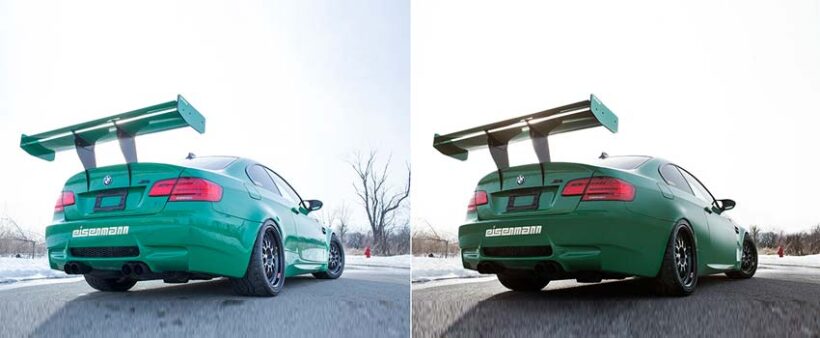
Automotive photo editing is a critical component of professional car photography. With the proper editing techniques and tips, you can turn your car pictures into stunning works of art that showcase your car’s best features.
In a nutshell, automotive picture editing can be a powerful tool for businesses and individuals looking to market their vehicles and can help to enhance their appearance and appeal to potential buyers.
Whether you’re a professional photographer or someone who loves taking pictures of your car, these tips will help you. If you have any inquiries regarding the automotive photo editing process, feel free to leave a comment.

